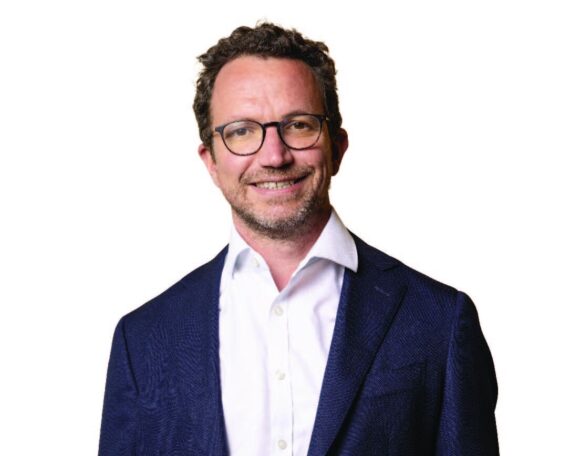This article was written in collaboration with Massimo Bozzo, interactive media writer for Altitude Accelerator.
In today’s rapidly shifting tech ecosystem, the security and vulnerability of information are leading concerns for organizations across industries. At the same time, managing cyber risks and maintaining comprehensive IT infrastructure visibility have only become more difficult.
At this year’s Collision Conference in Toronto, we had the opportunity to speak with two leaders in the tech industry: Dr. Ann Irvine, Resilience’s Chief Data and Analytics Officer and Christina Kosmowski, CEO of Logic Monitor. They discussed the security and vulnerability of information and what their companies are doing to combat ever evolving threats.
Information Security Risks Are On The Rise
According to IBM’s 2023 report on data breach costs, cybersecurity has only become more prevalent. Data breaches have become increasingly costly, with the worldwide average expense reaching $4.45 million in 2023 – a 15% rise since 2020. In response to breaches, more than half of organizations intend to boost their security spending. This includes investments in areas such as incident response planning and testing, staff training programs, and advanced tools for detecting and responding to threats. Notably, companies that extensively utilize AI and automation for security purposes save an average of $1.76 million compared to those that don’t implement these technologies.
Dr. Irvine comments on the rise of data breaches, stating “Data breaches were the major headline 10 years ago and really took the cyber insurance market to the next level because they cost organizations so much money and they continue to be a risk to organizations. I think some of these statistics honestly are driven by increased amounts of disclosure. There is no longer a huge amount of reputational harm when a data breach occurs in an organization because they’re more common, and we’re used to them as consumers.”
Irvine also acknowledges the increasing regulation and guideline regarding what information is disclosed and to whom. In recent years, ransomware attacks have surged, presenting a significant unknown for organizations. The primary concerns involve the likelihood of experiencing a ransomware attack, the methods by which such an attack might occur, the potential costs involved, and the strategies for managing the aftermath. Compared to data breaches, which are relatively well-regulated, ransomware attacks pose a greater challenge for customers due to these uncertainties.
Adapting to Evolving Threats Within Increasingly Complex IT Environments
Currently, Logic Monitor monitors over a trillion records per day, manages an estimated 3 million active devices, and supports approximately 100,000 users across 30+ countries. Kosmowski, CEO responds to these statistics saying “I think it’s important that you, first and foremost, can see everything in your environment. You need to be able to collect this data from all the different sources, whether it’s your network, database, server, or cloud container– …that way you don’t have any blind spots.”
Kosmowski adds that once the data is collected and analyzed, it provides the context needed to become highly predictive. This allows for the identification of anomalies with pinpoint accuracy before they become significant issues. Additionally, solutions can be automated to directly address and resolve potential problems for customers.
Both Resilience and Logic Monitor indicate they can adapt to rapidly evolving threats. “Threats are evolving, threat actors are using new techniques, and we’re responding to those changes in very real-time,” noted Irvine. This proactive approach involves quickly understanding and disseminating information about new attack vectors, creating a positive feedback loop that strengthens the defenses of all their clients.
Logic Monitor’s large client base includes Coca-Cola, Top Golf, and Airbnb and admits addressing the complexity of modern IT (Information Technology) environments within them has only become more difficult. Kosmowski explains,
Kosmowski emphasizes the increasing complexity of IT environments, stating, “IT environments certainly are not getting less complex; they’re getting more complex and their surface areas increasing.” She explains that organizations are continuously adding new applications, databases, and infrastructures while also shifting between cloud and on-premises solutions. This complexity leads to a surge in data volume, with the number of records processed daily growing exponentially. As a result, IT operations face the challenge of sifting through an overwhelming amount of information and alerts. Kosmowski points out that this data deluge makes it increasingly difficult for IT teams to identify critical alerts amidst the noise, putting pressure on them to quickly determine which issues require immediate attention.
She emphasizes the importance of precise anomaly detection and automated solutions. Logic Monitor’s AI capabilities help filter out noise, allowing IT teams to focus on critical alerts and systemic issues, thus improving overall operational efficiency.
Kosmowski explains how cyber risk management has evolved and how companies need to adapt to this change: “Back in the day, you had on-premise observability tools from the late 90s, early 2000s, then in the 2010s with the rise of the hyperscalers, folks rushed to monitor the cloud. There was no one bridging those two things together and the world is hybrid. Plus, IT proliferation is continuing to happen at a pace we have never seen before.
Resilience provides a holistic approach that goes beyond conventional insurance offerings, combining risk management strategies with innovative cybersecurity solutions.
Logic Monitor’s platform’s provides a unified view of IT infrastructure, covering networks, infrastructures, cloud containers, and applications. As per Kosmowski “Logic Monitor is in a unique position to see the scale and breadth of information in a single unified view that nobody else can.” This capability is invaluable for organizations managing hybrid environments, which are becoming increasingly common.
Leveraging Real-Time Data And AI
Resilience’s dual role as a technology provider and insurance carrier provides insights into the financial impact of cyber-attacks, enabling them to guide companies in making informed decisions about their cyber risk management strategies. Irvine explains, “We are seeing how these attacks happen and how much they cost because we’re working with companies as their insurance provider. We know how they play out and the dollars and cents that are at stake. That puts us in a really good position to talk about ROI on different investments into security controls as well as insurance.”
Logic Monitor has integrated machine learning and stochastic model techniques since its inception in 2007, with recent advancements in generative AI further enhancing their predictive capabilities. By summarizing vast amounts of data into actionable insights, Logic Monitor allows IT personnel to ask natural language questions and receive clear recommendations, enabling more effective root cause analysis and automated solutions.
Proactive Defense and Building Client Trust
Both organizations identify the challenge of staying ahead of threats and defending their customer’s data, however the larger issue is combating against new technologies that are evolving into more powerful threats. Resilience’s proactive defense strategy means investing heavily in security research to continuously monitor cyber criminals’ tactics and techniques, allowing them to preemptively disrupt malicious activities. Irvine likened their approach to playing whack-a-mole: “The minute we identify something, we create a system that can stop future attacks of that kind.”
Similarly, Logic Monitor builds trust with clients by demonstrating quick value through immediate results, establishing its reliability and efficacy. “Everything we do is innovating with our customers,” emphasized Kosmowski. This customer-centric approach ensures that the platform addresses real business problems with real data, delivering quick and meaningful results.
The Ever-Changing Face of Cyber Risks
Irvine envisions a future where the cybersecurity industry undergoes significant disruption, with a greater emphasis on data-driven risk management. “The cybersecurity industry is going to be disrupted severely. We start to think about cybersecurity more as a risk and we start to put more data and more dollars and cents around some of these analyses,” she predicted.
As the industry matures, Dr. Irvine anticipates a shift towards more transparent and effective cybersecurity solutions, reducing the prevalence of smoke and mirrors in the marketplace. She also claims that “AI and LLM’s will take over jobs. There will be automation, and we’re going to need to upskill individuals to solve some of these hard problems. It’s just a challenge for all of us to figure out how.”
Kosmowski also remarked that the industry must remain on top of what will continue to be a definitive risk to organizations, “Over 86% of companies are hybrid and expect to remain hybrid for the foreseeable future, plus we know IT proliferation is continuing to happen at a pace that we have never seen before.”
The security and vulnerability of information in today’s digital landscape require innovative and agile approaches. Dr. Ann Irvine and Christina Kosmowski exemplify how their unique solutions in comprehensive risk management with advanced observability can safeguard businesses from costly cyber-attacks and ensure robust IT infrastructure. As cyber threats continue to evolve, it’s clear that data-driven strategies will be the new standard to effectively manage uncertainty.
ABOUT: Massimo Bozzo is a fourth year professional writing and communications student at University of Toronto, Mississauga who enjoys writing. He’s had some works published through campus publications and is currently working at Altitude Accelerator as the Interactive Media Writer. He looks forward to learning more about blog and article writing and wishes to gain experience in the marketing and communications fields.
Read More












